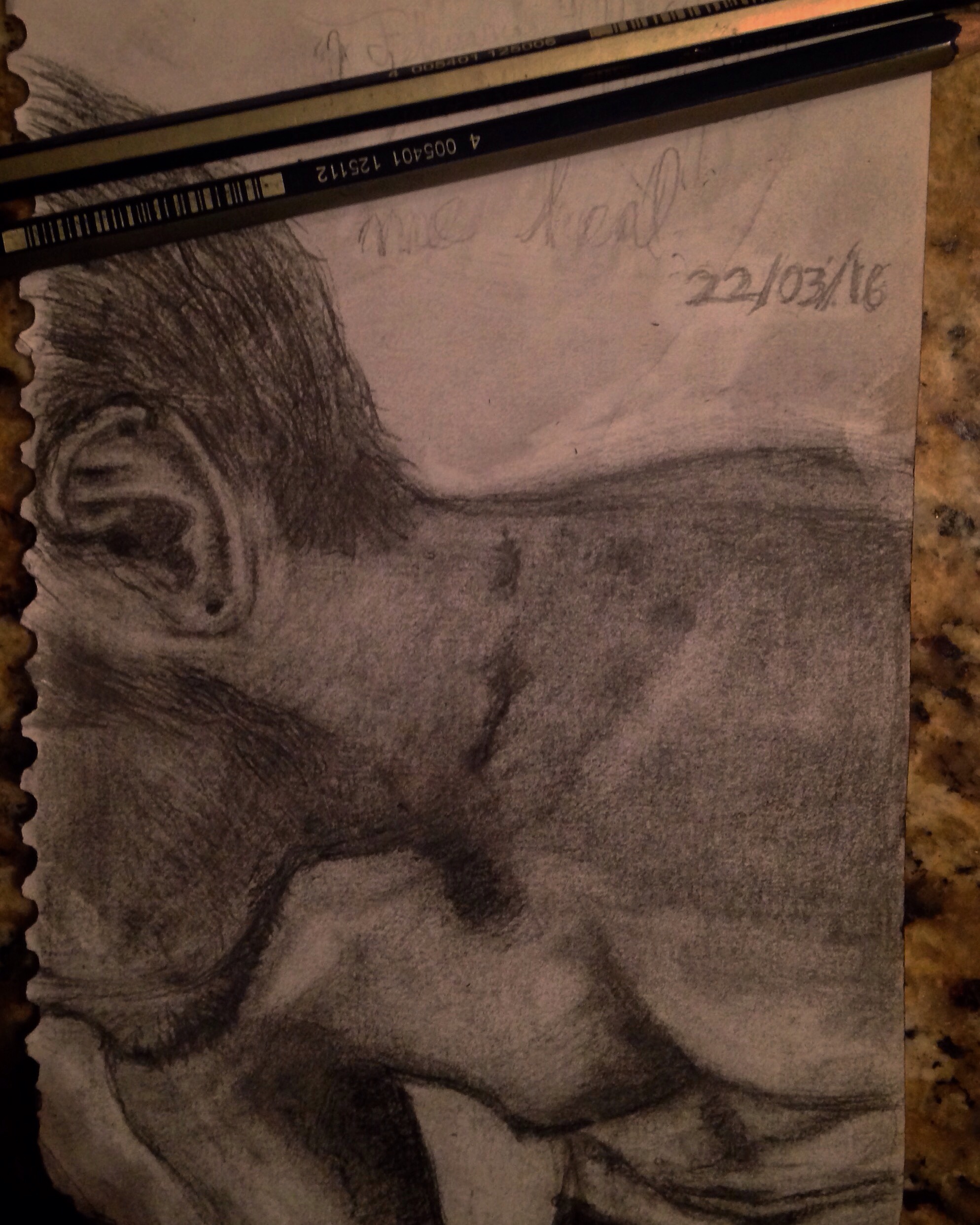“All similes are true and most metaphors are false”
– Donald Davidson
In his essay “What Metaphors Mean,” Donald Davidson writes, “The most obvious semantic difference between simile and metaphor is that all similes are true and most metaphors are false. The earth is like a floor…. But turn these sentences into metaphors, and you turn them false; the earth is like a floor, but it is not a floor” (Davidson, 41). This assertion, while not fundamentally untrue, is nevertheless problematized: Davidson fails to acknowledge that the tension between literary subject and comparative object—which emerges from metaphoric structure, and gives rise to the semantic conditions he describes—is a categorical strength of the metaphor as a literary device. Metaphors interrogate and enrich a literary subject by challenging the ordinary parameters of its semantic reality: a function made possible by the precise sense of factual or literal incongruence that Davidson observes. In both William Shakespeare’s ‘Sonnet 18’ and Sylvia Plath’s ‘Metaphors,’ the poet endeavors to adequately convey his or her subject through figurative rhetoric. Plath is ultimately the more successful of the two: her employment of metaphors lends form and nuance to a topic too complex for simple articulation, while Shakespeare’s use of an extended simile, though effective, generates a diametric and comparatively simplistic representation of the poetic subject. The figurative strength of Plath’s poem, particularly in contrast to Shakespeare’s, is contingent upon her use of metaphors to interrogate the areas of the unnamed and the unnamable. Thus, the juxtaposition of these two texts underscores the metaphor’s literary potential to rival or even surpass the figurative capacities of the simile; through their production of the very dynamic that Davidson identifies as “false,” metaphors can in fact express a number of remarkably subtle and intricate narrative truths.
This essay posits that figurative language, especially in poetry, mimics a number of the structural and post-structural linguistic paradigms outlined by theorists such as Saussure, Jakobson, and Derrida. By generating interactions between the poetic subject and its object of comparison that closely resemble those of a sign and its signifier, similes and metaphors echo differing variations upon well-established semiotic models; in much the same manner that linguistic meaning emerges as “…the result of a process of division or articulation, of signs being themselves only because they are not some other sign” (Eagleton, 129), the subject of a poem is defined by both its analogous and its differential relationships to a comparative object. This is evident in Shakespeare’s ‘Sonnet 18,’ wherein a single simile runs through the text, comparing the subject—a nameless, genderless figure presumably functioning as a love interest for the narrator—to a summer’s day. ‘Sonnet 18’ demonstrates an inherent awareness of the inadequacy of its own simile: the references to “rough winds” and “summer’s lease” (Shakespeare, 18, ll. 3-4) underscore the relatively transient, and therefore inferior, nature of the comparative object. In this sense, Shakespeare’s employment of figurative language evokes the structuralist conception of the ‘poetic’ as residing, above all, “…in language’s being placed in a certain kind of self-conscious relationship to itself…the sign is dislocated from its object: the usual relation between sign and referent is disturbed, which allows the sign a certain independence as an object of value in itself” (Eagleton, 98). More specifically, though, the extended simile that runs throughout ‘Sonnet 18’ echoes the structural semiotic model applied in the writings of Saussure: it contains a “delimited structure of meaning” (Eagleton, 127) wherein the correlation between sign and signifier is direct and often simplistic. The subject of ‘Sonnet 18’ is like a summer’s day in that he or she is “lovely” and “temperate,” but not like a summer’s day in that he or she is “more lovely” and “more temperate” (Shakespeare, 18, l. 2). The association is fundamentally diametric, and leaves little space for interpretive nuance.
The demarcation inherent within the figurative language of ‘Sonnet 18’ is similarly apparent in the structure of the text itself: the consistent rhyme scheme, augmented by uniform iambic pentameter and an absence of enjambment, constitutes a perfect Elizabethan sonnet. Even the poem’s volta elucidates upon the simplistic nature of the relationship between the subject and its object of comparison: the word “but” in line 9, which denotes the poetic ‘turn,’ is in this case a mere vehicle whereby the narrator asserts that the poetic subject, once immortalized in literature, will defy the limitations that characterize the object of comparison (Shakespeare, 18, l. 9). The absolute nature of the relationship between the love interest and the object to which he or she is analogized is thus reiterated; the subject continues to be “like” or “not like” a summer’s day in a variety of differing but ultimately diametric ways. This simile therefore presupposes a fixed semiotic structure indicating little other than the beauty and aesthetic preservation of the poetic subject; it is “true” in the manner that Davidson’s interpretation of truth demands, but fails to employ the broader possibilities of figurative representation.
Sylvia Plath’s poem ‘Metaphors,’ on the other hand, achieves a richer depiction of its subject largely because its allegories cannot be semantically categorized as “true” when reimagined as literal statements. Professor Catherine Addison asserts that, “Between sameness and its opposite lies an infinite possibility of degrees” (Addison, 408). The implications of this statement are vital to the language and conception of ‘Metaphors’: unlike Shakespeare, who establishes a direct correlation between two like objects, Plath constructs an entirely metaphorical understanding of her subject, the pregnant female body. Plath’s poem contains several metaphors for pregnancy; but rather than functioning as simple indicators of gestation, these references to elephants, “ponderous” houses, and “melons strolling on two tendrils” (Plath, ll. 2-3) engender specific evocations of awkwardness and enormity. This dynamic is echoed in the poem’s meter: various instances of enjambment disrupt the iambic pentameter, creating a palpable sense of impregnation within the rhythm. Paired with the numerical significance of nine syllables in each of the nine lines, indicating nine months of pregnancy, the formal composition of ‘Metaphors’ establishes the entire poem, like the individual images it contains, as an extended metaphor for an expectant body.
As Davidson himself asserts earlier in his essay, “[A metaphor’s] interpretation reflects as much on the interpreter as on the originator” (Davidson, 31). In other words, the literary value of metaphor arises largely as a consequence of its own imprecision: by indicating the nature of a poetic subject through varying descriptions what the subject is not, metaphors generate space for a critical analysis grounded in oppositional identification. Plath establishes her poem as “a riddle in nine syllables” (Plath, l. 1): employing various metaphors and compelling the audience to ‘solve’ the text by identifying these metaphors as allegories for her pregnant state. This initiates a discourse between reader and text that is contingent upon the metaphor’s factual ambiguity and resultant need for interpretation. Like Shakespeare, Plath recognizes that even figurative language is not fully adequate for communicating her subject; thus, the unspeakable magnitude of pregnancy in ‘Metaphors’ is represented not simply through metaphors, but through the very inability of these metaphors to fully verbalize the speaker’s state of being. Each allegorical image augments the interpretive versatility of the text, and the reader is tasked with giving interpretive form to the poetic subject by identifying not only the narrator’s pregnancy, but also its analogously denoted implications.
In this manner, the very characteristic of metaphor that Davidson identifies as “false” — namely, its lack of direct correlation between subject and object of comparison—becomes the primary means by which poets such as Plath better communicate their subject matter. Metaphors expand the thematic parameters of a text by situating the subject in the discursive excess between literal and allegorical, and so become, as Winifred Nowottny explains, “a useful means of dealing with the area of unnamed experiences” (Nowottny, 57). This recalibration is linguistic as well as thematic: by eliminating a single word—usually “like” or “as”—metaphors eradicate physical distance between the subject and the object of comparison, creating a condensed syntactic structure wherein interpretive potential can move beyond the constraints of the factual. In Plath’s poem, for instance, the word “pregnant” is never explicitly used; the text’s implications reside in a figurative space made possible by the nonliteral nature of the analogous images. Similes, on the other hand, can inhibit this dynamic by establishing the fixed, diametric subject-to-object correlations exemplified in ‘Sonnet 18.’ From a linguistic standpoint, then, poetic similes recall the structuralist conceptions of language by echoing a “delimited structure of meaning” between sign and signifier; poetic metaphors align with post-structural semiotic ideals by engaging with the differential excess between a subject and its object of comparison.
Of course, the identity that a metaphor ascribes to a ‘sign’ or literary subject is necessarily contingent upon its oppositional relationship to an allegorical object, and inevitably becomes inapplicable in a literal semantic context. Davidson’s claim that metaphors will constitute untruths when read as sentences, while similes will retain their factual validity, is thus substantiated; but this reading seems incomplete in light of works such as Plath’s, wherein semantic tension is precisely what allows the text to communicate thematic truths well beyond the confines of literalism. When Davidson’s definitions of “true” and “false” are reimagined within the framework of poems such as ‘Sonnet 18’ and ‘Metaphors,’ it is apparent that similes are likely to be insufficient or even outright false, because their inherent semiotic simplicity can yield, as Shakespeare himself acknowledges, inadequacies of comparison that result in a subject “belied with false compare” (Shakespeare, 130, l. 14). Metaphors, in contrast, emerge as a complex and useful literary device, the merit of which should not be limited to the oft-reductive discourses surrounding our conceptions of the literal and the semantic.
Works Cited
Addison, Catherine. “From Literal to Figurative: An Introduction to the Study of Simile.” College English 55.4 (1993): 402-19. JSTOR. Web.
Davidson, Donald. “What Metaphors Mean.” Critical Inquiry 5.1, Special Issue on Metaphor (1978): 31-47. JSTOR. Web.
Eagleton, Terry. Literary Theory: An Introduction. Oxford: B. Blackwell, 1985. Print.
Fishelov, David. “Poetic and Non-Poetic Simile: Structure, Semantics, Rhetoric.” Poetics Today 14.1 (1993): 1-23. JSTOR. Web.
MacCormac, Earl R. “Metaphor and Literature.” Journal of Aesthetic Education6.3 (1972): 57-70. JSTOR. Web.
Nowottny, Winifred. The Language Poets Use. 5th ed. London: Athlone, 2000. Print.
Plath, Sylvia. “Metaphors.” Collected Poems. Ed. Ted Hughes. London: Faber and Faber, 1989. 116. Print.
Shakespeare, William. “18.” Ed. Barbara A. Mowat and Paul Werstine. Shakespeare’s Sonnets. New York: Washington Square, 2004. 39. Print.
Shakespeare, William. “130.” Ed. Barbara A. Mowat and Paul Werstine. Shakespeare’s Sonnets. New York: Washington Square, 2004. 269. Print.


Recent Comments